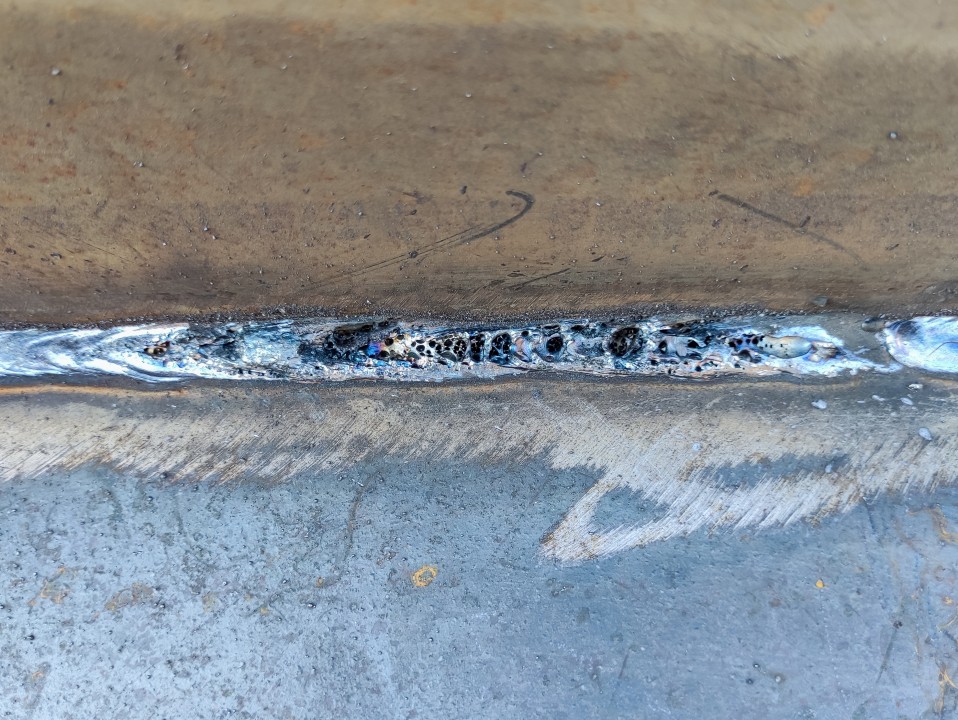What is Porosity in Welding: Common Sources and Reliable Remedies
What is Porosity in Welding: Common Sources and Reliable Remedies
Blog Article
Unwinding the Enigma of Porosity in Welding: Tips for Lessening Defects and Making Best Use Of Quality
In the intricate world of welding, porosity stays a relentless obstacle that can dramatically influence the top quality and honesty of bonded joints. As we dive right into the midsts of porosity in welding, uncovering the secrets to its avoidance and control will certainly be extremely important for specialists looking for to grasp the art of premium weldments.
Recognizing Porosity in Welding
Porosity in welding, an usual issue come across by welders, describes the existence of gas pockets or voids in the welded material, which can compromise the stability and high quality of the weld. These gas pockets are commonly caught during the welding procedure as a result of different aspects such as incorrect protecting gas, polluted base materials, or incorrect welding criteria. The development of porosity can deteriorate the weld, making it prone to fracturing and deterioration, inevitably resulting in structural failings.
By acknowledging the value of preserving proper gas protecting, making certain the cleanliness of base materials, and enhancing welding setups, welders can considerably lower the chance of porosity development. In general, a detailed understanding of porosity in welding is crucial for welders to produce premium and sturdy welds.

Common Reasons of Porosity
When examining welding procedures for possible top quality issues, understanding the typical reasons for porosity is essential for preserving weld honesty and avoiding architectural failings. Porosity, characterized by the presence of tooth cavities or gaps in the weld steel, can significantly endanger the mechanical buildings of a welded joint. One common root cause of porosity is incorrect protecting gas insurance coverage. Poor shielding gas flow prices or inappropriate gas combinations can bring about climatic contamination, causing porosity development.
Another widespread reason for porosity is the presence of moisture and impurities externally of the base metal or filler product. When welding products are not correctly cleaned or are revealed to high degrees of moisture, the evaporation of these contaminants throughout welding can produce spaces within the weld grain. Furthermore, welding at inappropriate parameters, such as exceedingly high traveling rates or currents, can produce too much disturbance in the weld pool, trapping gases and causing porosity. By attending to these typical causes through proper gas shielding, product preparation, and adherence to ideal welding parameters, welders can decrease porosity and enhance the top quality of their welds.
Strategies for Porosity Prevention
Carrying out effective safety nets is essential in minimizing the incident of porosity in welding procedures. One technique for porosity prevention is making certain proper cleaning of the base steel prior to welding. Contaminants such as oil, oil, corrosion, and paint can bring about porosity, so detailed cleansing using appropriate solvents or mechanical methods is necessary.

Using high-grade filler materials and shielding gases that are ideal for see page the base metal and welding process can considerably reduce the danger of porosity. In addition, preserving appropriate welding criteria, such as voltage, existing, take a trip rate, and gas flow rate, is vital for porosity avoidance.
In addition, using appropriate welding methods, such as maintaining a constant travel speed, electrode angle, and arc size, can assist protect against porosity (What is Porosity). Ample training of welders to guarantee they comply with best methods and high quality control procedures is additionally necessary in decreasing porosity issues in welding

Best Practices for Top Quality Welds
One trick method is keeping appropriate tidiness in the welding location. Completely cleansing the workpiece and bordering location before welding can assist minimize these concerns.
An additional finest method is to very carefully pick the appropriate welding parameters for the particular materials being joined. Correct criterion choice ensures ideal weld infiltration, blend, and total high quality. Using premium welding consumables, such as electrodes and filler steels, can significantly influence the last weld high quality.
Significance of Porosity Control
Porosity control plays an important role in ensuring the honesty and high quality of welding joints. Porosity, characterized by the presence of dental caries or spaces within the weld steel, can substantially jeopardize the mechanical residential or commercial properties and structural honesty of the weld. Extreme porosity weakens the weld, making it a lot more vulnerable to breaking, deterioration, and total failing under operational lots.
Efficient porosity control is crucial for preserving the wanted mechanical homes, such as toughness, ductility, and toughness, of the bonded joint. What is Porosity. By decreasing porosity, welders can improve the overall top quality and integrity of the weld, guaranteeing that it fulfills the efficiency needs of the designated application
Moreover, have a peek at this website porosity control is crucial for attaining the desired visual appearance of the weld. Extreme porosity not just weakens the weld however likewise diminishes its visual appeal, which can be vital in sectors where aesthetic appeals are essential. Correct porosity control methods, such as making use of the proper shielding gas, controlling the welding specifications, and making certain proper cleanliness of the base materials, are vital for producing top notch welds with marginal issues.

Verdict
Finally, porosity in welding is a typical flaw that can jeopardize the high quality of the weld. By comprehending the causes of porosity and read executing appropriate prevention methods, welders can lessen flaws and accomplish greater high quality welds. It is important to regulate porosity in welding to make sure the honesty and toughness of the end product. Applying ideal techniques for porosity control is vital for attaining optimal welding outcomes.
Report this page